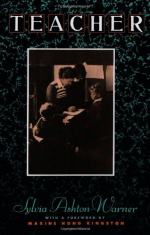
|
| Name: _________________________ | Period: ___________________ |
This test consists of 5 short answer questions, 10 short essay questions, and 1 (of 3) essay topics.
Short Answer Questions
1. What did Ashton-Warner keep on hand to repair the student books?
2. To what world-wide agency did Ashton-Warner refer to in describing teaching methods in underdeveloped nations?
3. What did Ashton-Warner do with the key vocabulary words that were forgotten the next day?
4. In what country did the volunteer describe teaching villagers how to read and write their own names?
5. What was one bird NOT mentioned as being seen outside the school?
Short Essay Questions
1. How did Russian peasant students react to Leo Tolstoy's experimental school?
2. Why did Ashton-Warner describe the language of published first readers as "dead"?
3. Why were "key words" so essential to learning to read?
4. What is wrong with the cadence in many published first readers?
5. How did early exposure to white cultural norms adversely affect the Maori?
6. Why did Ashton-Warner throw out words that students did not recognize the second time?
7. What was the connection Ashton-Warner drew between the infant room and war and peace?
8. How can a teacher tell when a book is valuable to her students, according to Ashton-Warner?
9. How did the students perform when they did expressive dancing versus when they learned specific moves?
10. What was the role of handwriting in the Maori students' stories?
Essay Topics
Write an essay for ONE of the following topics:
Essay Topic 1
Ashton-Warner rejected the use of corporal punishment, while pointing out that many prominent philosophers embraced it. Write an essay exploring this issue. Is corporal punishment ever effective? What short-term and long-term impacts does it have on children? Does it make a difference if it is administered at home or in a school setting? What other disciplinary techniques can be used, both at home and at school? Include in your essay whether most schools today allow corporal punishment and how attitudes have changed since Ashton-Warner first wrote "Teacher."
Essay Topic 2
The mother of one of Ashton-Warner's students, Mark Cutter, protested that her son was going too fast in the classroom and she wanted him to slow down. This was an unusual complaint among the parents of her students. Was Cutter's mother simply opposed to Ashton-Warner's teaching methods? Or did she sincerely believe that her son was being advanced too quickly? Is it possible for a student to advance too quickly? What does a teacher do if children in his classroom are advancing at different paces? How does a teacher adjust his teaching to ensure that all students are progressing at their own rate without either slowing down or speeding up the overall pace for the entire class?
Essay Topic 3
Ashton-Warner wrote about the "Golden Section" in education and how she incorporated nature into the classroom. What are the benefits of teaching about nature in the classroom? How does nature provide insights into other areas of the curriculum? Ashton-Warner's classroom was somewhat unique in that the nature was right outside and sometimes even entered the classroom. How do teachers living in more urban environments bring nature into the classroom? Is it possible for all teachers to take their students out into actual natural settings or can there be benefits to bringing natural lessons into the physical classroom? How does the natural world speak to children and how can that be harnessed?
|
This section contains 1,122 words (approx. 4 pages at 300 words per page) |

|




